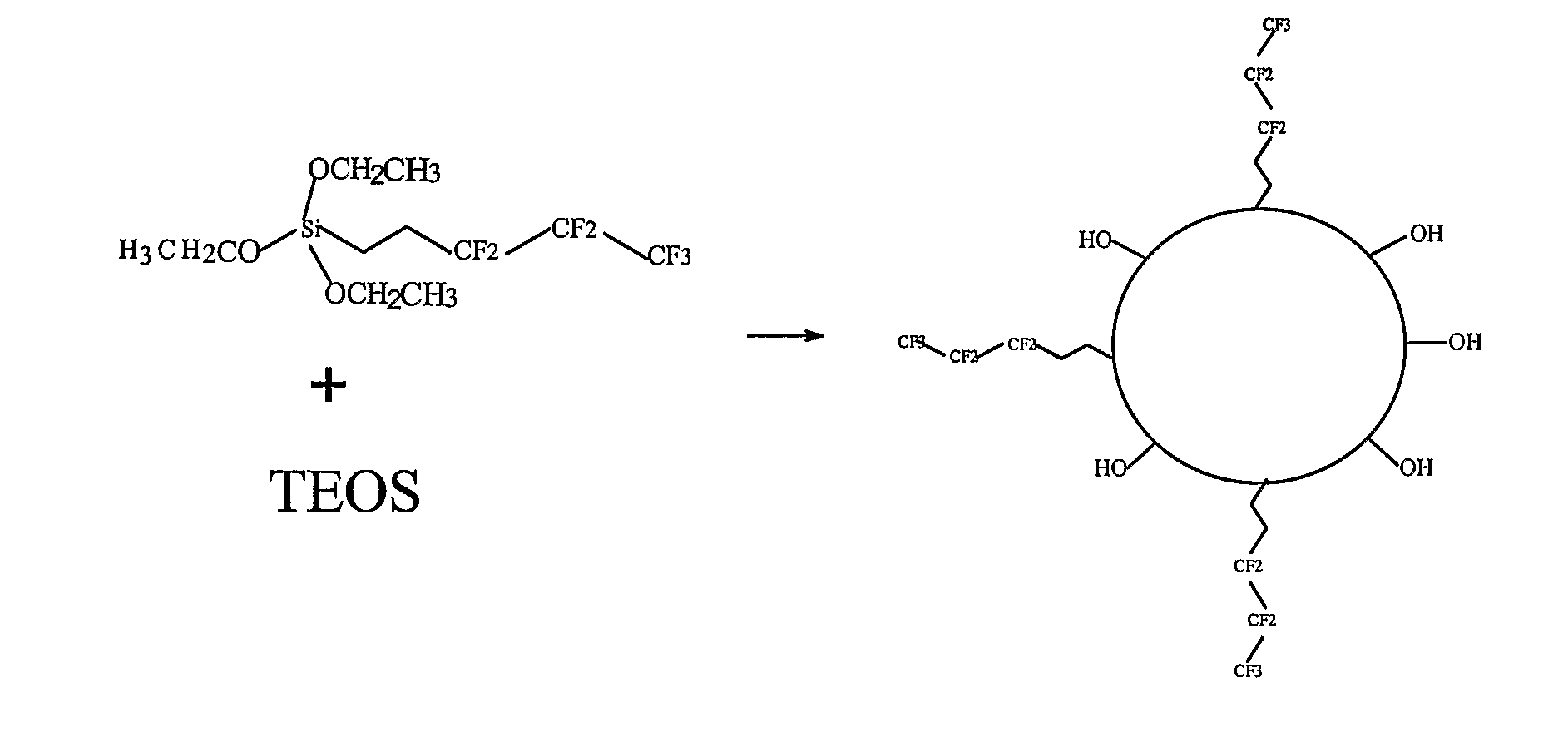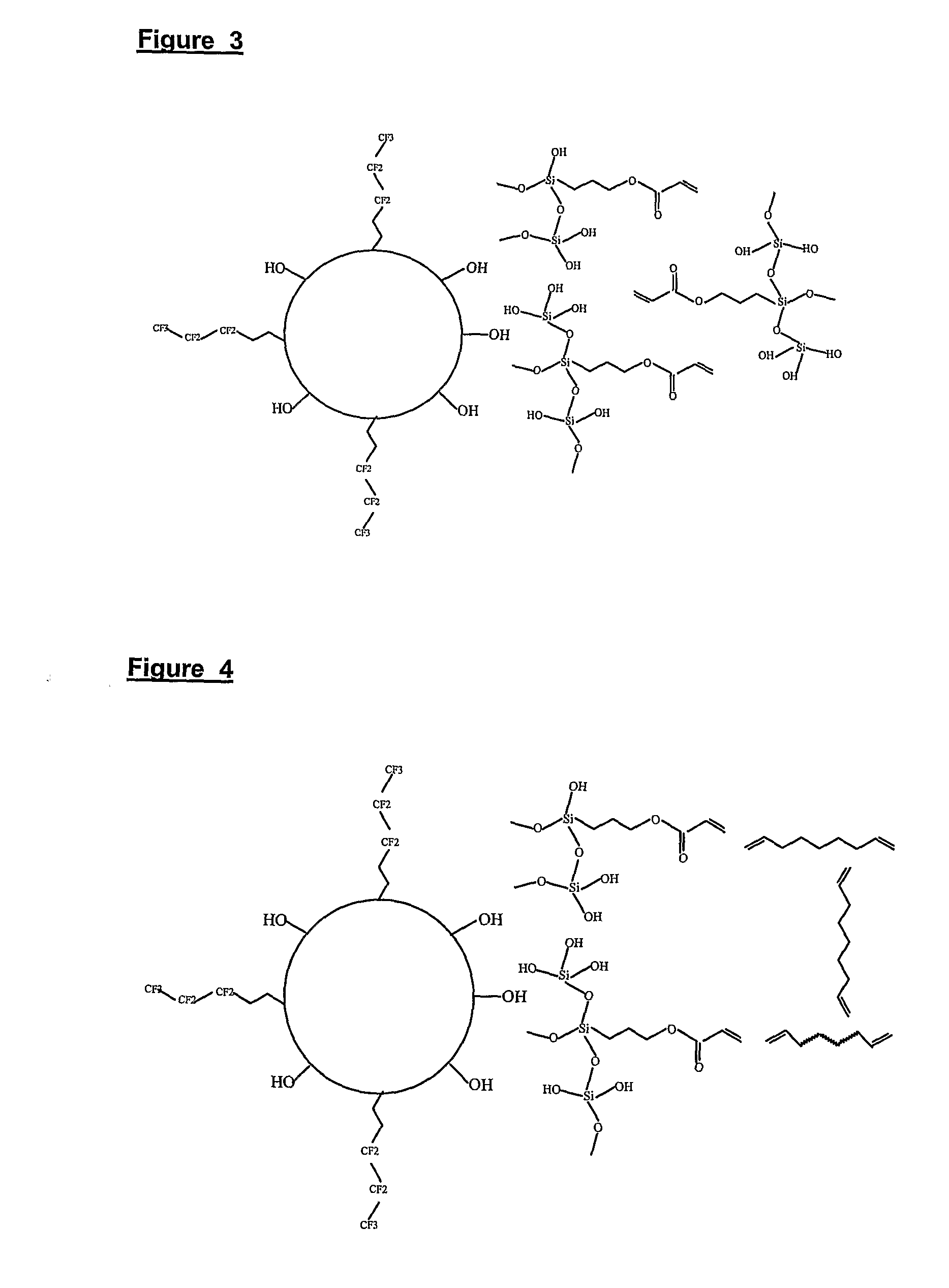Inorganic-Organic Hybrid Nanocomposite Antiglare and Antireflection Coatings
a technology of nanocomposites and nanocomposites, which is applied in the direction of synthetic resin layered products, instruments, transportation and packaging, etc., can solve the problems of surface reflection, high undesirable effects, and high production costs, and achieve the effect of improving the anti-reflection
- Summary
- Abstract
- Description
- Claims
- Application Information
AI Technical Summary
Benefits of technology
Problems solved by technology
Method used
Image
Examples
example 1 and example 2
Preparation of Fluorocarbon Modified Silica Particles
example 1
[0041]In a reaction vial, 100 ml isopropanol (IPA), 14 ml tetraethoxysilane (TEOS) and 6 ml tridecafluoro-1,1,2,2-tetrahydrooctyl)triethoxysilane (F-TEOS) were added and mixed with a magnetic stirrer at a high speed for two minutes. While stirring, 7.5 ml deionized water and 5 ml concentrated ammonia solution (NH3 28-30 wt % in water) were added into the mixture. The mixture was stirred over a period of 30 to 240 minutes. The initially clear mixture became a translucent suspension. The suspension was aged for two days and then the particle size was determined by laser light scattering. The medium for particle sizing was ethanol. The particle suspensions were treated by ultrasound for 5 to 10 minutes before particle sizing. The fluoro-content in the particles was calculated based on the molar ratios of the reactants.
[0042]The average particle diameter prepared from above procedure is about 120 nm. The molar ratio of F-containing silica to pure silica in the particles is 20:80.
example 2
[0043]In a reaction vial, 100 ml isopropanol, 14 ml TEOS and 6 ml F-TEOS were added and mixed with a magnetic stirrer at a high speed for two minutes. During the stirring, 14.5 ml of deionized water and 5 ml concentrated ammonium hydroxide solution (NH3 28-30 wt %) were added to the mixture. The mixture was stirred over a period of 30 to 240 minutes. The initially clear mixture develops into an opaque white suspension. The suspension was subsequently aged for two days and then the particle size was determined by laser light scattering. The particle size is around 250 nm. The molar ratio of F-containing silica to pure silica in the particles is 20:80.
PUM
| Property | Measurement | Unit |
|---|---|---|
| Particle size | aaaaa | aaaaa |
| Particle size | aaaaa | aaaaa |
| Viscosity | aaaaa | aaaaa |
Abstract
Description
Claims
Application Information
 Login to View More
Login to View More - R&D
- Intellectual Property
- Life Sciences
- Materials
- Tech Scout
- Unparalleled Data Quality
- Higher Quality Content
- 60% Fewer Hallucinations
Browse by: Latest US Patents, China's latest patents, Technical Efficacy Thesaurus, Application Domain, Technology Topic, Popular Technical Reports.
© 2025 PatSnap. All rights reserved.Legal|Privacy policy|Modern Slavery Act Transparency Statement|Sitemap|About US| Contact US: help@patsnap.com



